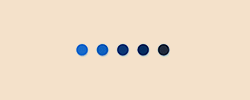Name: Akshay Dixit
Sec: 8
Executive Summary: Curled Metal Inc. a manufacturer of curled metal technology based products wants to
diversify into new
... [Show More] markets to reduce it’s reliance on one product and industry. CMI has developed a new
product called cushion pads which improves the efficiency and safety in pile driving operations. The
conventional pads used currently are heavily commoditised, un-branded and cheap. Also, the customer base
for the cushion pads market is ambiguous since various players in the value chain make the purchasing
decisions. Although CMI cushion pads provide value to the customer by improving efficiency of operation,
the cost of manufacturing the pads is high and it’s important to price the product profitability while ensuring
that there is sufficient demand for the product.
I recommend that CMI target the large company contractors segment not only because it makes for bulk of
the total market size but also because this segment derives value out of using CMI’s cushion pads. Creating a
direct sales force and using respected industry experts for promotions would be the key factors to ensure the
success of this novel product in a fragmented market. CMI should price the product at $750 /unit, which
would return 70% gross margins to CMI and also significantly reduce customers overall operations cost.
Company: Curled Metal Inc. (CMI), originally a manufacturer of custom-fabricated components for
chemical process filtration, evolved from selling metal as a finished product to selling products that use
certain type of metal as a raw material. CMI’s highest selling product called Slip-Seal occupies 80% market
share of the automotive high-temperature seal market. In order to reduce their reliance on Slip-Seal and the
auto industry, CMI wants to diversify into new markets where curled metal technology can be used for new
applications. CMI’s core-competency lies in the curled metal technology; they purchase wire from outside
vendors and perform the flattening and curling operations in-house. CMI has developed a new product using
the curled metal technology called cushion pad which is used in the process for driving piles.
Competition: CMI cushion pads compete directly with two current solutions available in the market to
create a cushion to prevent the shock of the hammer from damaging the hammer or pile. The traditional
solution involved use of hardwood blocks. However, the hardwood blocks provide inadequate cushioning,
need frequent replacement and their availability is a problem. Hence, majority of the industry uses the
conventional pads. Amongst conventional pads, micarta slabs and some phenolic plastic pads, are most often
used and have cost and performance characteristics similar to each other.
However, the market is fragmented with no manufacturer dominating the business and most pads are
unbranded, having been cut by small, anonymous job shops. CMI also faces competitive threat from other
manufacturers of curled metal who might discover this new application for curled metal and enter the
business before CMI could get patent protection.
Customer: The customer base for cushion pads is ambiguous since different players in the pile driving value
chain make the purchasing decision. The potential customers include rental outlets who provide the pads ,
heavy construction contractors who use them and also some pile manufacturers who offer them. Although
pile hammer distributing/renting companies stock and sell a lot of cushion pads, these companies have
incentive to sell cheaper and less-efficient conventional cushion pads so that contractors don’t return
equipments faster. Contractors (large companies & independent) who participate in the bigger, more complex
construction projects make up for influencers as well as potential customers for cushion pads. Contractors
compete on a revenue-per-foot basis with each other and although they talk to each other they don’t reveal
any competitive secrets. Approximately 75% contractors own their own equipments while 25% rent it.
Segmenting: We can segment the market for cushion pads into three categories based on four behavioural
factors: 1) Equipment ownership: Customers who own their own equipments and those who rent equipments.
2) Procurement process: Customers who operate internationally and have global procurement teams v/s
those who operate only in the US and do local sourcing 3) Size & Scope of work: Contractors who are large
and do big complex construction projects have bargaining power and create best practises v/s contractors
who are small and do smaller projects follow processes set by big players. 4) Price sensitivity: Customers
who are price sensitive v/s those who prefer high quality over price. Some customers especially the renting
companies are willing to buy cheaper parts while others such as the expert contractors will pay higher for the
extra value delivered through efficiency improvement.
The segments are: a - Large company contractors, b - Small contracts who rent and c - Rental companies
Targeting: CMI should target the customer base of large company contractors because the customers in this
segment own majority of their equipments and would be less price sensitive. Since these contractors own
their equipments they have a larger incentive to maintain the equipments. These customers will also engage [Show Less]














